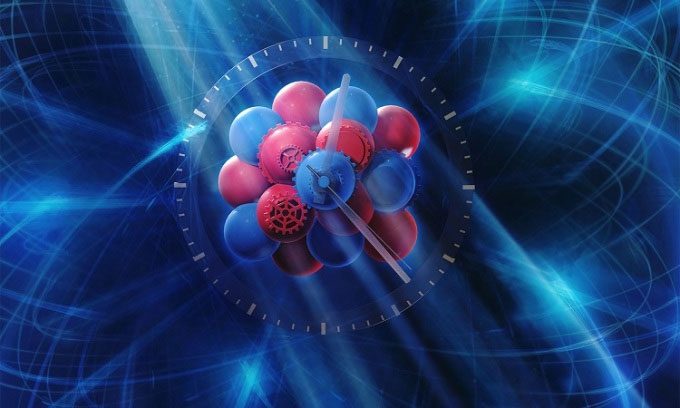A groundbreaking experiment using X-ray lasers reveals the potential of scandium, promising to create atomic clocks with unprecedented accuracy.
An international research team has achieved a revolutionary discovery with the European X-ray Free Electron Laser (XFEL), bringing humanity closer to realizing the potential of atomic clocks. They stimulated transitions in the nucleus of scandium, an abundant element. This unique resonance requires X-rays with an energy of 12.4 kiloelectronvolts (keV), which is 10,000 times the energy of visible light, with a width of just 1.4 femtoelectronvolts (feV), equivalent to being off by just one second in 300 billion years, Interesting Engineering reported on September 28.

Simulation of scandium atomic clock. (Photo: DESY)
Ralf Röhlsberger, a scientist at the German national research center DESY, stated that the accuracy of the clock will help redefine the boundaries of precise timing.
Atomic clocks serve many applications, including precise satellite positioning. Yuri Shvyd’ko, the project leader at Argonne National Laboratory, emphasized the scientific potential of scandium resonance, recognized over three decades ago. However, researchers have faced the challenge of finding a sufficiently bright X-ray source to illuminate the very narrow resonance path of scandium.
Utilizing X-ray lasers like the European XFEL allows researchers to shine X-ray laser light onto thin films of scandium and detect the glow remaining from the excited atomic nucleus. This achievement paves the way for the development of atomic clocks.
Understanding the resonance energy plays a crucial role in constructing atomic clocks. In a recent experiment, noise reduction technology and high-resolution optical crystals helped researchers determine the scandium resonance energy with exceptional accuracy, 250 times higher than previous measurements, marking a significant advancement in the realization of nuclear atomic clocks.
The applications of this breakthrough extend far beyond timing. The technology promises to deliver ultra-high precision spectrometers, measurements of fundamental physical interactions, and probing gravitational time dilation at the sub-millimeter level, thereby enhancing our understanding of the universe. This achievement stems from a collaborative effort among researchers from various institutions worldwide.




















































